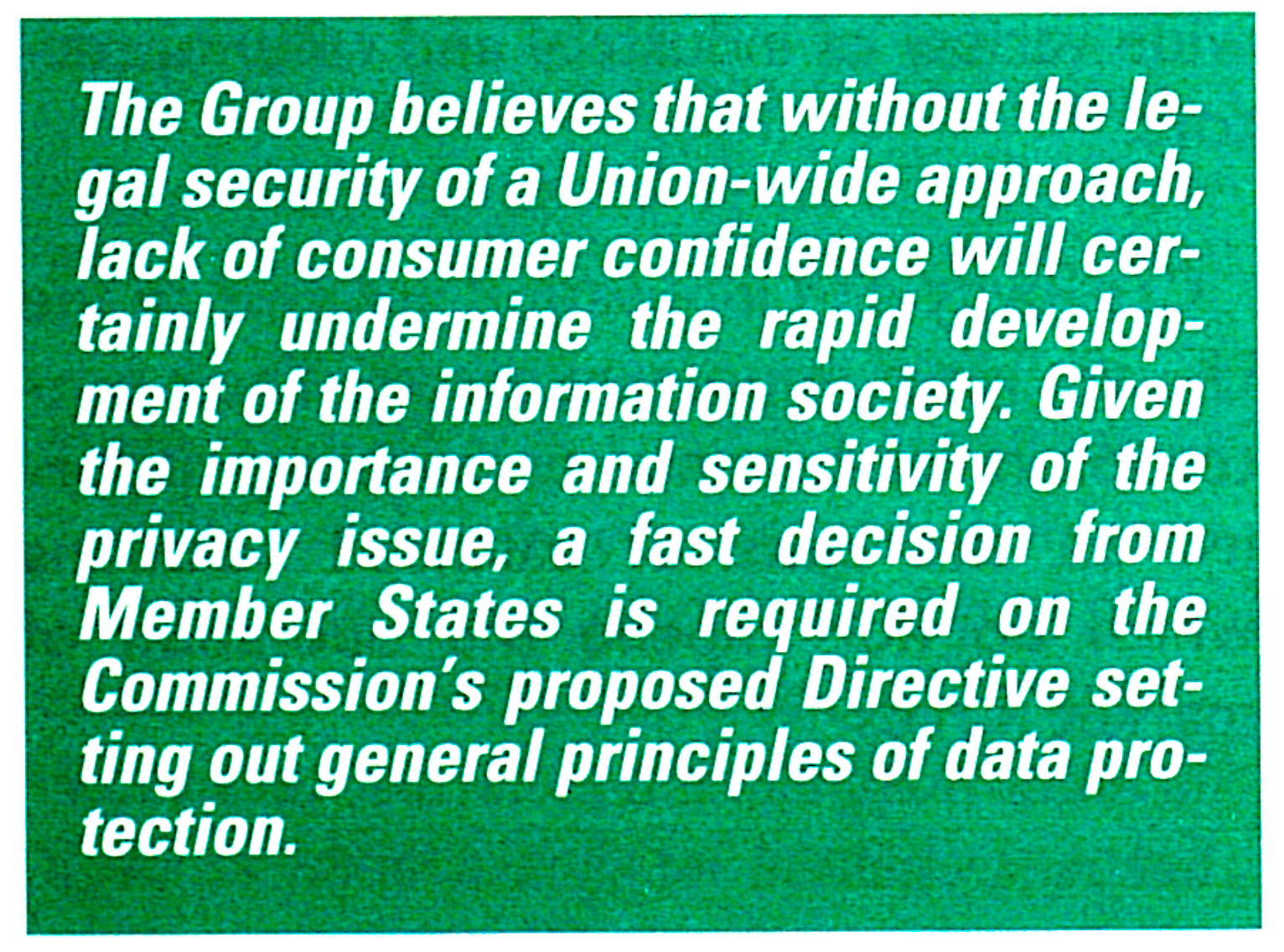Key developments


- At the end of May 1994 is made available the influential report Europe and the Global Information Society: Recommendations to the European Council : Conference G7 – Rapport Bangemann (officially published by the Publications Office in 1995).


- 🇪🇺 On 10 February 1994 the European Parliament votes a Resolution on the Constitution of the European Union backing a constitutional text that would include a list of ‘Human rights guaranteed by the Union’ including a right to ‘privacy’ and a ‘right of access to information’.
- 🇦🇷 The Constitution of Argentina of 1994 establishes at federal level an ‘habeas data’ mechanism, that is, an expedite judicial remedy to access data held in public registers, and in some private registers, and, in certain cases, request the correction, secrecy or update of the data (art. 43).
Also this year
- 🇪🇺 The European Commission publishes:
- Growth, Competitiveness, Employment – The Challenges and Ways Forward Into the 21st Century, White Paper, 1994.
- Brainbridge, David, Tony Bovaird, Colin Gilmore, Corien Prins, and Jules Theeuwes (1994), ‘An evaluation of the financial impact of the proposed European Data Protection Directive: Final report’, Report to the European Commission.
- ‘Data Protection: Political Agreement in Council’, News from DG XV December no. 4/1994, European Commission, 16.
- The first issue of EPIC Alert, a monthly publication of the Electronic Privacy Information Center (EPIC) in Washington DC ‘covering issues related to privacy and civil liberties in the information age’ is published.
- ⚖️ The European Court of Human Rights (ECtHR) decides in Murray v the UK, on 28 October 1994.
- The 16th International Conference on Data Protection takes place in The Hague (Netherlands) from 6 to 8 September 1994. It is titled ‘Facing dilemmas’ and hosted by the Netherlands Registration Chamber (chaired then by Peter J. Hustinx), which published the proceedings. Speakers included David Flaherty, Rosemary Jay, T. Koopmans, and Spiros Simitis.
Literature
- Carr, I., & Williams, K., (1994), ‘Electronic data interchange, data protection and the European Community‘, Journal of Law and Information Science, 5(1), 24-34.
- Hoeren, Thomas (1994), ‘Electronic data interchange: the perspectives of private international law and data protection’, in Carr Indira and Katherine Williams (eds.), Computers and law,Intellect Books, 128–141.
- Mahalingam Carr, Indira, and Katherine Williams (1994), ‘Electronic Data Interchange, Data Protection and the European Community’, Journal of Law and Information Science 5(1 ), 24-34.
- Michael, James (1994), Privacy and human rights: An international and comparative study, with special reference to developments in information technology, Darmouth, UNESCO.
Films


- 🎬 Trois couleurs: Rouge [Three colours: Red] (1994), Krzysztof Kieślowski.
Music
- 🎵 Rollins Band ‘Disconnect’ (from Weight, 1994).